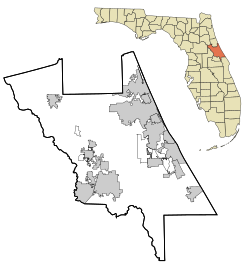This article needs additional citations for verification .(August 2025) |
Rowallan | |
 | |
| Location | Ormond Beach, Florida |
|---|---|
| Coordinates | 29°17′36″N81°2′59″W / 29.29333°N 81.04972°W |
| Architectural style | Classical Revival |
| MPS | Historic Winter Residences of Ormond Beach, 1878–1925 MPS |
| NRHP reference No. | 88001724 [1] |
| Added to NRHP | October 6, 1988 |
Rowallan is a historic house in Ormond Beach, Florida, United States, located at 253 John Anderson Highway. On October 6, 1988, it was added to the U.S. National Register of Historic Places. [2]
